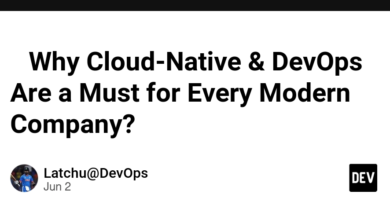کتابچه راهنمای DevOps: روشهای اساسی برای پیکربندی خط لوله CI/CD کارآمد

DevOps مجموعه ای از شیوه ها است که هدف آن ایجاد شکاف بین توسعه نرم افزار و عملیات IT است. DevOps با تقویت همکاری بین توسعه ، عملیات و تیم های تضمین کیفیت ، تحویل سریعتر محصولات نرم افزاری ، بهبود کیفیت و نسخه های قابل اطمینان تر را تضمین می کند.
یکی از اصول اصلی DevOps ادغام مداوم (CI) و تحویل مداوم (CD) است که روند ساخت ، آزمایش و استقرار نرم افزار را به صورت خودکار و ساده تر می کند.
این کتابچه راهنمای اساسی برای پیکربندی یک خط لوله کارآمد CI/CD ، با تمرکز ویژه بر اینکه چگونه Turtleci می تواند به تسریع و بهینه سازی این فرایندها کمک کند ، ارائه می دهد. این که آیا شما یک مهندس DevOps ، رهبر فناوری اطلاعات یا توسعه دهنده نرم افزار هستید ، این راهنما بینش های لازم برای ساخت یک خط لوله CI/CD قوی را که از توسعه و استقرار با سرعت بالا پشتیبانی می کند ، به شما می دهد.
خط لوله CI/CD چیست؟
استقرار برنامه تلفن همراه Turtleci
DevOps بهترین روشها برای تسلط بر CI/CD
خط لوله CI/CD یک توالی خودکار از مراحل است که به تیم های توسعه اجازه می دهد تا نرم افزار را به سرعت و کارآمد بسازند ، آزمایش و مستقر کنند. این خط لوله به منظور کاهش تلاش دستی ، به حداقل رساندن خطاها و اطمینان از اینکه نرم افزار همیشه برای استقرار آماده است ، طراحی شده است.
دو مؤلفه اصلی خط لوله CI/CD عبارتند از:
ادغام مداوم (CI): عمل ادغام متداول تغییر کد در یک مخزن مشترک ، و به دنبال آن آزمایش خودکار برای اطمینان از اینکه کد جدید عملکرد موجود را نمی شکند.
تحویل مداوم (CD): عمل به کارگیری خودکار کد به تولید پس از گذراندن مرحله آزمایش ، امکان انتشار مکرر و قابل اعتماد را فراهم می کند.
چگونه Turtleci خط لوله CI/CD شما را تقویت می کند
Turtleci یکپارچه با ابزارهای محبوب CI/CD و سیستم عامل های ابری ادغام می شود و قابلیت های قدرتمند اتوماسیون ، دید و نظارت را فراهم می کند. با استفاده از Turtleci ، تیم ها می توانند پیکربندی خط لوله خود را بهینه کنند ، استقرار خودکار را به اتمام برسانند و مداخله دستی را کاهش دهند ، که منجر به تحویل سریعتر و قابل اطمینان تر نرم افزار می شود.
شیوه های اصلی DevOps برای پیکربندی خط لوله CI/CD کارآمد
استقرار برنامه تلفن همراه Turtleci
خط لوله اصلی CI/CD برای Devops و MLOP
برای دستیابی به پتانسیل کامل خط لوله CI/CD ، پیروی از بهترین شیوه هایی که بهینه سازی کارآیی و اثربخشی هر مرحله را بهینه می کنند ، بسیار مهم است.
بیایید برخی از روشهای اصلی پیکربندی خط لوله DevOps را کشف کنیم.
- کنترل نسخه و استراتژی انشعاب – کنترل مجریان ستون فقرات هر فرآیند DevOps است و یک استراتژی انشعاب کارآمد تضمین می کند که خط لوله به راحتی اجرا شود. GIT رایج ترین سیستم کنترل نسخه در DevOps است و تعریف قوانین روشن در مورد انشعاب ضروری است.
برخی از استراتژی های محبوب عبارتند از:
انشعاب ویژگی: توسعه دهندگان روی شاخه های ویژگی جدا شده کار می کنند و پس از اتمام ویژگی ، آنها را در شاخه اصلی ادغام می کنند.
GitFlow: این استراتژی از انواع مختلف شاخه ها برای مراحل مختلف توسعه ، مانند شاخه های ویژگی ، شاخه های انتشار و شاخه های HotFix استفاده می کند.
توسعه مبتنی بر تنه: توسعه دهندگان غالباً به شاخه اصلی (TRUNK) متعهد می شوند ، و از ادغام سریع و حداقل واگرایی از پایگاه اصلی استفاده می کنند.
با پیروی از یک استراتژی شاخه ای روشن ، تیم ها اطمینان حاصل می کنند که پایگاه کد پایدار است و خط لوله CI/CD قادر به انجام تغییرات کارآمد است.
- آزمایش خودکار آزمایش یک مؤلفه مهم خط لوله CI/CD است. آزمایش خودکار تضمین می کند که اشکالات و مسائل در اوایل چرخه توسعه ، بهبود کیفیت نرم افزار و کاهش خطر نقص در تولید ، گرفتار می شوند.
انواع اصلی تست های خودکار در خط لوله CI/CD شامل موارد زیر است:
تست های واحد: این آزمون ها کوچکترین واحدهای کد مانند توابع یا روش ها را تأیید می کنند.
تست های ادغام: این تست ها بررسی می کنند که چگونه قسمت های مختلف سیستم با هم کار می کنند.
تست های پایان به پایان: این تست ها تعامل واقعی کاربر را با سیستم شبیه سازی می کنند تا از همه چیز مطابق آنچه انتظار می رود اطمینان حاصل کند.
برای تقویت فرآیند تست خودکار ، Turtleci ادغام یکپارچه را با طیف گسترده ای از چارچوب های آزمایش ارائه می دهد و به تیم ها کمک می کند تا به سرعت آزمایشات را به صورت موازی انجام دهند و بازخورد سریع در مورد کیفیت کد دریافت کنند.
- پیکربندی به عنوان کد با پیکربندی به عنوان کد ، می توانید زیرساخت های خود را به صورت برنامه ای تعریف و مدیریت کنید. این عمل قوام را تضمین می کند ، خطاها را کاهش می دهد و تکرار محیط در مراحل مختلف خط لوله CI/CD را آسان تر می کند.
Azure DevOps ، GitLab و Jenkins همه از پیکربندی به عنوان کد با استفاده از YAML یا سایر زبان های نشانه گذاری پشتیبانی می کنند. با اتخاذ این عمل ، خط لوله خود را حفظ و مقیاس پذیر تر می کنید و مداخله دستی و فشار پیکربندی را کاهش می دهید.
- نظارت و بازخورد مداوم – خط لوله مؤثر CI/CD با استقرار پایان نمی یابد. نظارت و بازخورد مداوم برای حفظ کیفیت نرم افزار و اطمینان از موفقیت در استقرار ضروری است. ابزارهای نظارت بینش در زمان واقعی در مورد سلامت برنامه ها و زیرساخت ها ارائه می دهند.
Turtleci ویژگی های مانیتورینگ داخلی را ارائه می دهد که به تیم ها امکان می دهد وضعیت ساخت ، آزمایش و استقرار را ردیابی کنند. با ادغام Turtleci در خط لوله خود ، می توانید اعلان های زمان واقعی و گزارش های خودکار را دریافت کنید که به شناسایی زودهنگام مسائل کمک می کند و به تیم ها اجازه می دهد سریع پاسخ دهند و از خرابی جلوگیری کنند.
- استقرار خودکار – هنگامی که کد شما از تست های خودکار عبور می کند ، مرحله بعدی استقرار است. خودکار سازی فرآیند استقرار به شما امکان می دهد نرم افزار را سریعتر ارائه دهید ، خطاهای انسانی را کاهش داده و از قوام اطمینان حاصل کنید.
Azure DevOps و GitLab هر دو ابزار عالی برای مدیریت استقرار خودکار و با آنها ارائه می دهند
Turtleci ، شما می توانید با خودکار سازی استقرار در محیط های مختلف ، این روند را بیشتر کنید. این بدان معنی است که خط لوله شما می تواند به طور خودکار در محیط های توسعه ، مرحله بندی و تولید با حداقل مداخله دستی مستقر شود.
- اجرای موازی و مقیاس پذیری یکی از مزایای اصلی خط لوله CI/CD به خوبی تنظیم شده ، امکان مقیاس کارآمد خط لوله شما است. برای تیم های بزرگ و پروژه های پیچیده ، اجرای موازی کارهایی مانند ساخت و آزمایش برای بهبود عملکرد خط لوله بسیار مهم است.
با Turtleci ، تیم ها می توانند تست ها را انجام دهند و به طور موازی بسازند ، و به طور قابل توجهی زمان لازم برای تهیه کد را برای استقرار کاهش می دهند. این موازی سازی به ویژه در پروژه های بزرگ که صدها آزمایش باید انجام شود بسیار ارزشمند است.
- امنیت خط لوله خود یک نگرانی مهم برای تیم های DevOps است و اجرای بهترین شیوه ها برای تأمین خط لوله شما ضروری است.
برخی از شیوه های امنیتی مشترک برای خطوط لوله CI/CD شامل موارد زیر است:
اسکن کد: ادغام ابزارهای تجزیه و تحلیل کد استاتیک در خط لوله برای تشخیص خودکار آسیب پذیری های امنیتی.
مدیریت اسرار: ذخیره اطلاعات حساس مانند کلیدهای API ، اعتبارنامه ها و گواهینامه ها با استفاده از ابزاری مانند Azure Key Vault یا طاق های Hashicorp.
کنترل دسترسی: محدود کردن دسترسی به خط لوله و زیرساخت ها فقط به کاربران مجاز.
با ادغام شیوه های امنیتی در خط لوله خود ، اطمینان حاصل می کنید که کد و زیرساخت های شما ایمن است و خطر نقض امنیت را کاهش می دهد.
- بهبود مداوم-خط لوله CI/CD یک تنظیم یک بار نیست. باید با گذشت زمان تکامل یابد تا ابزارها ، فرآیندها و بهترین شیوه ها را در خود جای دهد. تیم ها باید به طور مرتب پیکربندی خط لوله خود را بررسی کنند تا تنگناها ، ناکارآمدی ها و مناطقی را برای بهبود شناسایی کنند.
Turtleci به تیم ها کمک می کند تا با ارائه بینش در مورد عملکرد خط لوله و برجسته سازی مناطقی که اتوماسیون می توانند بهبود یابند ، به طور مداوم فرآیندهای CI/CD خود را بهبود بخشند.
ساختن خط لوله CI/CD قوی با بهترین روشها و لاک پشت ها
پیکربندی یک خط لوله کارآمد CI/CD برای توسعه نرم افزار مدرن ضروری است. با دنبال کردن بهترین روشهای DevOps مانند کنترل نسخه ، آزمایش خودکار و نظارت مداوم ، تیم ها می توانند خط لوله ای بسازند که ضمن اطمینان از انتشار با کیفیت بالا ، تحویل نرم افزار را تسریع می کند.
ادغام Turtleci در خط لوله CI/CD شما یک لایه اضافی از اتوماسیون ، نظارت و دید را اضافه می کند و به شما در بهینه سازی هر مرحله از فرآیند کمک می کند. این که آیا شما از Azure DevOps ، GitLab یا هر ابزار دیگر CI/CD استفاده می کنید ، Turtleci به تیم ها این امکان را می دهد تا کل چرخه عمر نرم افزار خود را به صورت خودکار ، کاهش خطاها و بهبود سرعت استقرار به صورت خودکار انجام دهند.
امروز ادغام Turtleci را در خط لوله DevOps خود شروع کنید و مزایای تحویل خودکار نرم افزار مداوم را تجربه کنید!



